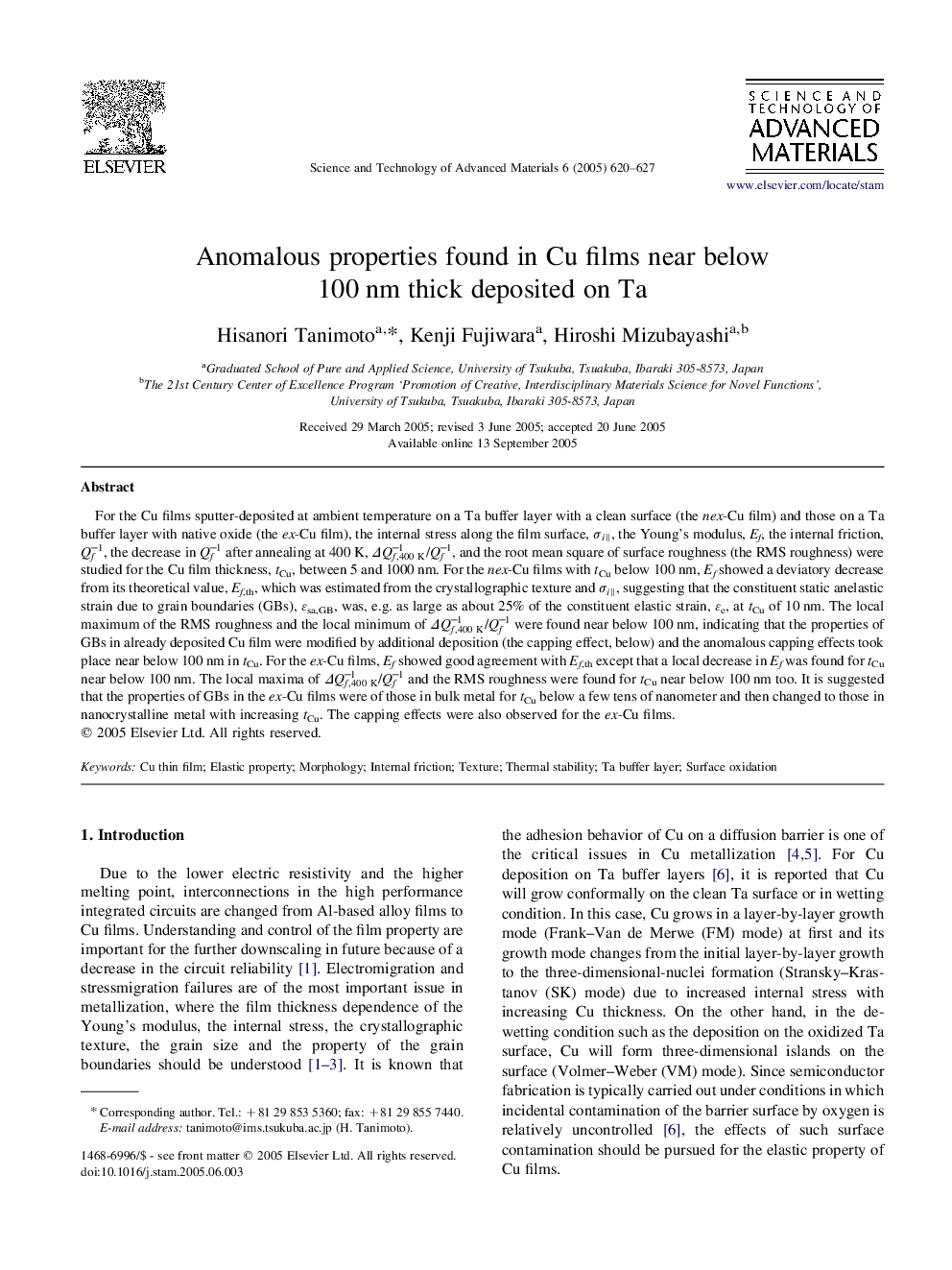| Article ID | Journal | Published Year | Pages | File Type |
|---|---|---|---|---|
| 9801346 | Science and Technology of Advanced Materials | 2005 | 8 Pages |
Abstract
For the Cu films sputter-deposited at ambient temperature on a Ta buffer layer with a clean surface (the nex-Cu film) and those on a Ta buffer layer with native oxide (the ex-Cu film), the internal stress along the film surface, Ïiâ¥, the Young's modulus, Ef, the internal friction, Qfâ1, the decrease in Qfâ1 after annealing at 400 K, ÎQf,400Kâ1/Qfâ1, and the root mean square of surface roughness (the RMS roughness) were studied for the Cu film thickness, tCu, between 5 and 1000 nm. For the nex-Cu films with tCu below 100 nm, Ef showed a deviatory decrease from its theoretical value, Ef,th, which was estimated from the crystallographic texture and Ïiâ¥, suggesting that the constituent static anelastic strain due to grain boundaries (GBs), εsa,GB, was, e.g. as large as about 25% of the constituent elastic strain, εe, at tCu of 10 nm. The local maximum of the RMS roughness and the local minimum of ÎQf,400Kâ1/Qfâ1 were found near below 100 nm, indicating that the properties of GBs in already deposited Cu film were modified by additional deposition (the capping effect, below) and the anomalous capping effects took place near below 100 nm in tCu. For the ex-Cu films, Ef showed good agreement with Ef,th except that a local decrease in Ef was found for tCu near below 100 nm. The local maxima of ÎQf,400Kâ1/Qfâ1 and the RMS roughness were found for tCu near below 100 nm too. It is suggested that the properties of GBs in the ex-Cu films were of those in bulk metal for tCu below a few tens of nanometer and then changed to those in nanocrystalline metal with increasing tCu. The capping effects were also observed for the ex-Cu films.
Keywords
Related Topics
Physical Sciences and Engineering
Materials Science
Materials Science (General)
Authors
Hisanori Tanimoto, Kenji Fujiwara, Hiroshi Mizubayashi,
